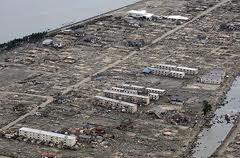Weekend Extra: BMP’s Webinar Notes on 'A Case Study for Proactive Supply Chain Management' by Next Level Purchasing
Before I even begin my notes, let me just point out that if you are not a member of the Next Level Purchasing Association, you are missing out. Next Level Purchasing offers the SPSM (Senior Professional in Supply Management) certification program. Joining the association is absolutely free and comes with a number of benefits, such as members-only webinars, newsletters, and networking opportunities. If you want to get your feet wet with the kind of programs they offer, there are several mini-courses they offer, completely online and for less than $20! Interested? Good for you! Click here to learn more by clicking on the NLP logo on our partner page. That way Buyers Meeting Point gets credit for your purchase and a portion of the proceeds go to charity.
 The speaker on 'A Case Study for Proactive Supply Chain Management' was Catherine Herr, a Senior Director of Global Manufacturing Procurement at a Fortune 500 Company. Her presentation centered around that company’s response to the March 2010 earthquake and tsunami in Japan. What captured me immediately about this webinar is that she told us the STORY of the disaster and the outcome and responses rather than just walking us through bullet points on a slide.
The speaker on 'A Case Study for Proactive Supply Chain Management' was Catherine Herr, a Senior Director of Global Manufacturing Procurement at a Fortune 500 Company. Her presentation centered around that company’s response to the March 2010 earthquake and tsunami in Japan. What captured me immediately about this webinar is that she told us the STORY of the disaster and the outcome and responses rather than just walking us through bullet points on a slide.
To give you some of the factual basics, her company’s annual risk assessment ranks suppliers high, medium or low on nine areas of risk. These areas were put together by a cross functional team that involved both procurement and business owners:
- Historical Performance
- Financial Health
- Country of Operation (Political, Economic, Financial)
- Legal Compliance
- Business Concentration
- Quality Compliance
- Social Responsibility (Labor/Ethics/Management)
- Health, Safety & Environment
- Intellectual Property Protection
When they started managing risk they did not involve suppliers for fear of revealing how immature their program was. They have now reached a place where suppliers are routinely asked to participate in risk mitigation planning during review meetings.
Catherine’s advice on starting a risk management program? Just pick somewhere and start, because as overwhelming as it may seem, anything is better than nothing. Aim for something “accessible and understandable” and keep everything in perspective (for example, she offered up that lost sales are more expensive than lost inventory).
So what well and what went poorly in their response to the Japanese tsunami?
On the positive side:
- They never lost sight that the human impact of the disaster was the first priority.
- They were able to make full use of the tools they had in place to quickly understand the tier one impact to their supply chain.
- They had worked with a local university (with whom they had worked previously in a corporate mentoring role) to geographically map out their suppliers. They made use of this map again to understand the impact of the tornadoes in the American Midwest that following summer.
- They made sure that all information flowed through one person in order to streamline response efforts.
But, on the other hand:
- They didn’t realize that a more formal extension of sympathy was expected (such as a written letter). Advice: ask someone apart from the situation with knowledge of the culture what the expectations are.
- They needed to be more prepared to deal with the impact to their tier 2 and 3 suppliers.
- In an effort to be thorough, they were overly responsive to what Catherine called “pop up” assignments that turned out to be so immediate that by the time they were completed they were no longer of value.
- In the midst of the stress and pressure, it was very hard to know when to exit “disaster mode” and return to a more business as usual pace and routine.
For more information on Charles Dominick, Next Level Purchasing, or the SPSM Certification, click here.
When you subscribe to the blog, we will send you an e-mail when there are new updates on the site so you wouldn't miss them.